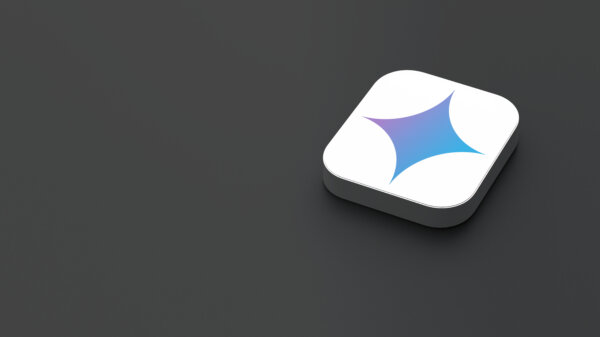Digital PR ideation: specks of gold in a sea of mud
The internet contains multitudes. In thirty years we’ve packed it with nearly all of recorded history, and it’s growing every second. As a result, it’s overflowing with starting points for Digital PR campaigns, and there’s always something shiny to get drawn to.
There are new apps with fresh perspectives, novel campaigns that create repeatable methodologies, and, my favourite, sleeping giants of overlooked data that can be redeveloped with modern angles.
But it can be intimidating to sift through the sea of mud to find these specks of gold, so to help you avoid grabbing fistfuls and coming up empty, here are a few tips to help you get started:
1. Let proximity provide inspiration
When I first started seeing AI generated art on my timeline I didn’t know how to do it. I assumed it required complex, expensive, tools beyond my understanding and pay packet. When I finally decided to learn I found that it was simple and relatively cheap.
Crucially, I spent a year as an audience member to the communities, and then weeks playing around with it myself, before I decided to see how it could work for campaigns (it also made the header image for this blog).
It’s important to set the marketing switch in your head to ‘OFF’ when you first explore these tools. Whether it’s TikTok, crypto, BeReal, or AI. Let the predatory thinker lounge under an Acacia tree for a little while and just use it as intended. As a consumer.
Once you turn it back on, and start to flick through the bottomless bookmarks of campaign inspiration you have on your browser to see what applies, you’ll have a lot more to work with. A deeper understanding of the nuances of what you found interesting as a user, and the possibilities of data that you can glean from it as a marketer. Fundamentally, learning something without the pressure of ideation will lead to more authentic results for clients and journalists.
(If you don’t have time to jump on every new craze, then seek out somebody who does, before you blindly pitch an idea. This conversation will benefit your understanding tenfold, just make sure to ask the right questions.)
Wordle Wizards by WordTips/Neomam, was almost certainly created by people who used the app, loved it, and then realised how to turn it into a campaign. This might be an easy assumption, because everybody with a phone played Wordle in late 2021, but there’s also a chance that such a good idea wouldn’t have come without this time. Sometimes proximity provides inspiration.
2. Force the lightning strike
You don’t always have the luxury of time. Nor do you have lenient enough managers that will accept TikTok scrolling as a line item on a timesheet. In those instances you have to force the lightning strike of inspiration. Ideation is work after all. And that work can be a grind, even if you feel guilty saying so.
In these situations, I once again try to avoid campaigns that have been done before. They’re not guaranteed starting points for ideas. You need the story first. If the hook is a lump of dough, then a finished campaign is the cookie cutter. Once you’ve worked it into shape, throwing it against the board and rolling it in your hands, only then you can press it over to get the shape you want.
But first, we need to get that dough. I suggest starting with datasets. Also, Wikipedia. I’ve wasted a lot of hours on Wikipedia in the name of campaign ideation, and it is still my last desperate stop when I’m stuck on a topic. The unending chain of pages is like a predetermined word association game and sometimes it can provide you with an escape route.
Lists are a good starter. For example this Wikipedia bot that tweets a random page out every six hours. It won’t always give you the right answers, but looking at their timeline as I write this, they’ve tweeted out the list of ‘Commercial Failures in video games.’ This is a bonafide starting point for ideation. It’s interesting and lends itself to a headline when the next Cyberpunk or No Man’s Sky appears. It’s not complete by any means, but it is worth noting down and exploring, if only to see where the maze of blue links takes you next.
There’s also Google Dataset Search, Kaggle, and Any API to name a few. All are full of starting points potential around your topic. But once again you need to be able to take it and look at what campaign type would work best, which is where we have to steal like an artist.
3. Steal like an Artist
The last but maybe most important stop is looking at your competition. Our industry is full of copycats, which makes sense. I’m a believer that iron sharpens iron and there’s absolutely no harm in taking the bones of a pre-existing campaign and using that as a template for your own work.
I’ve put it last here, but there should be a constant creative osmosis from following the industry. If not, seek it out. Every time you see a campaign being shared from places like DigitalPRExamples, Content Curated, or The Grapevine, scroll down and see how it was done.
Our job in ideation and outreach is to learn these methodologies. Once you know how to display data, and how to turn it into a story that is digestible for a journalist, you can apply that learning to anything.
Spotifictional is an example from my own work. I was a fan of the much-better-designed Nestflix, a brilliant idea that created a Netflix-like interface for shows that are ‘nested’ within other television shows, like Interdimensional Cable in Rick & Morty. So much so that when I was watching Community and wondered if the band Natalie is Freezing was real, it prompted me to create my own homage using a mock Spotify interface and fictional bands. Which after a few emails led to a host of top tier links including The New York Times.
Hannah Smith of Worderist first introduced me to Austin Kleon, whose book ‘Steal like an Artist’ posits that all creative work is iterative and no idea is original. In it, he talks about ‘good theft’ and ‘bad theft’. Crucially, avoid stealing, plagiarism, and ripping off. Try to add something new or different, transform and remix the ideas that gave you inspiration. And always credit. Don’t just take someone else’s data and slap your brand name over it and pretend it was your work.
There are almost certainly more prescriptive, and probably more effective, ways to go about ideation. This isn’t the most time sensitive or guaranteed approach. But I do think that setting out like this does help foster a more fertile environment to come up with ideas. Put yourself in the right place and then apply your own personal processes to the above, some of it might serve as a creative compass when you’re lost at sea with a looming deadline.



